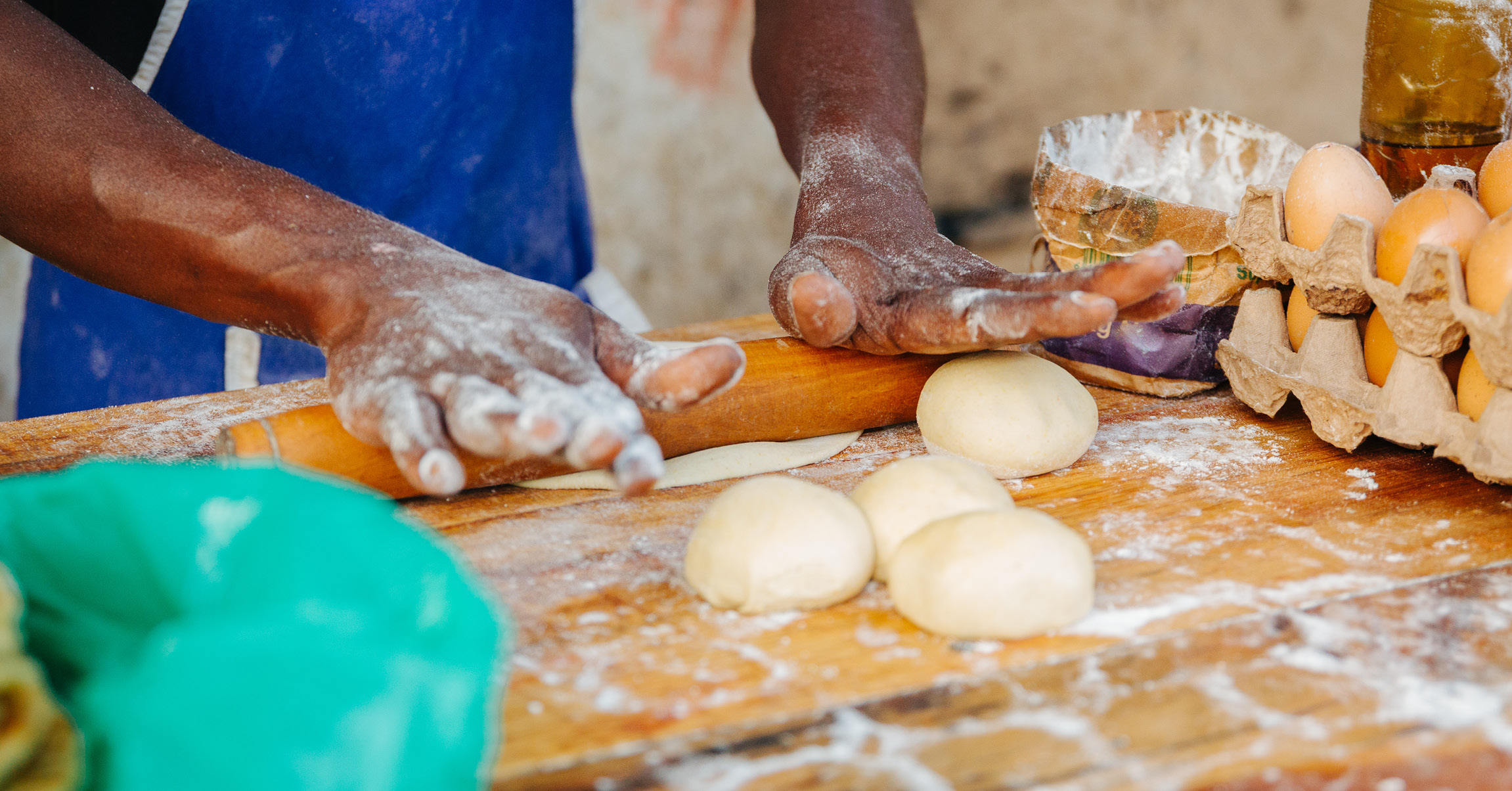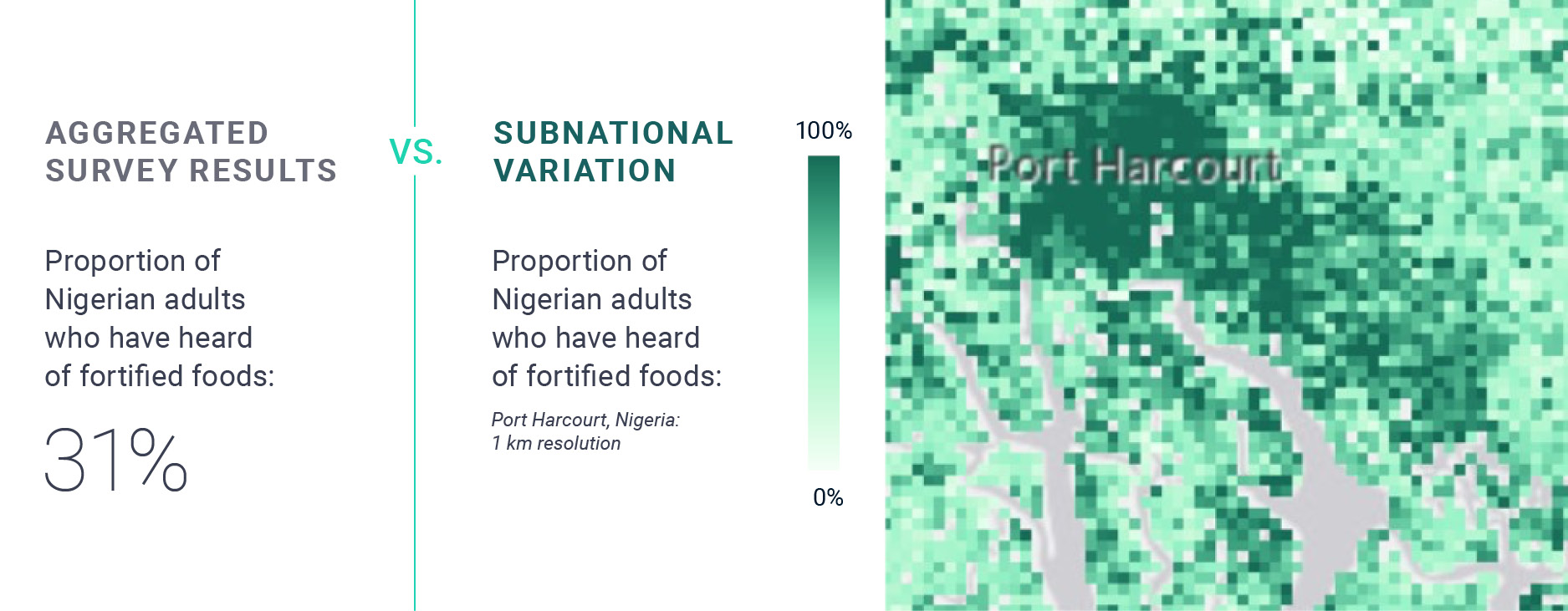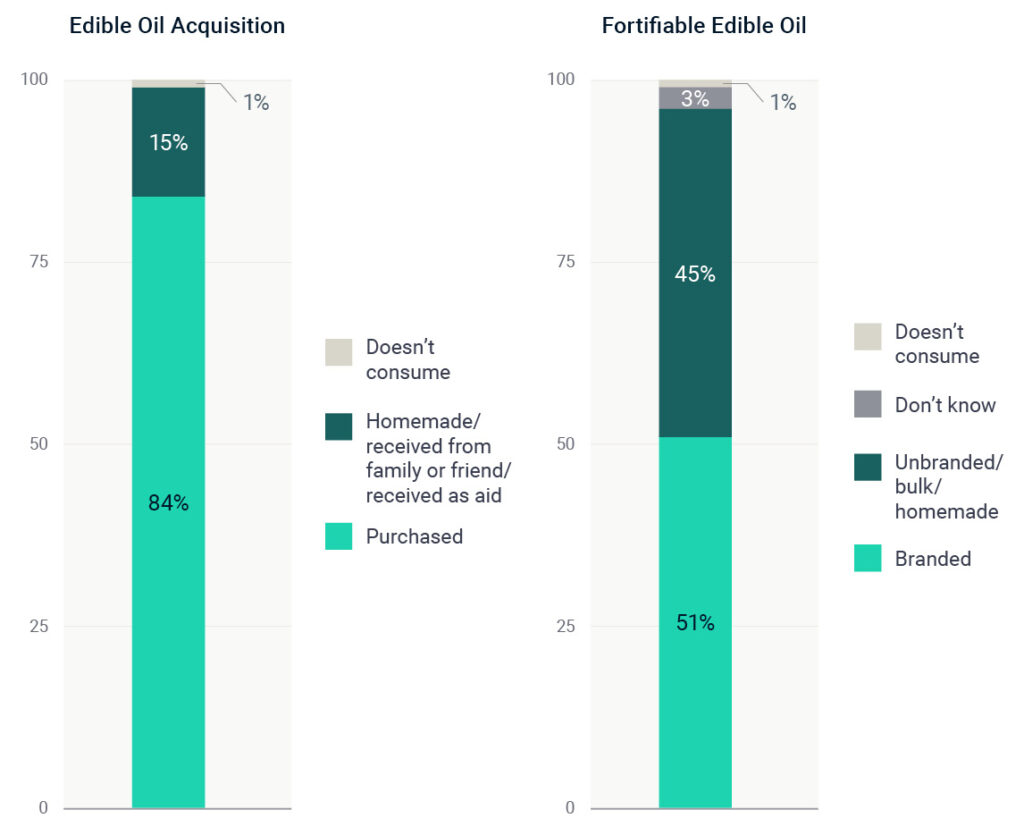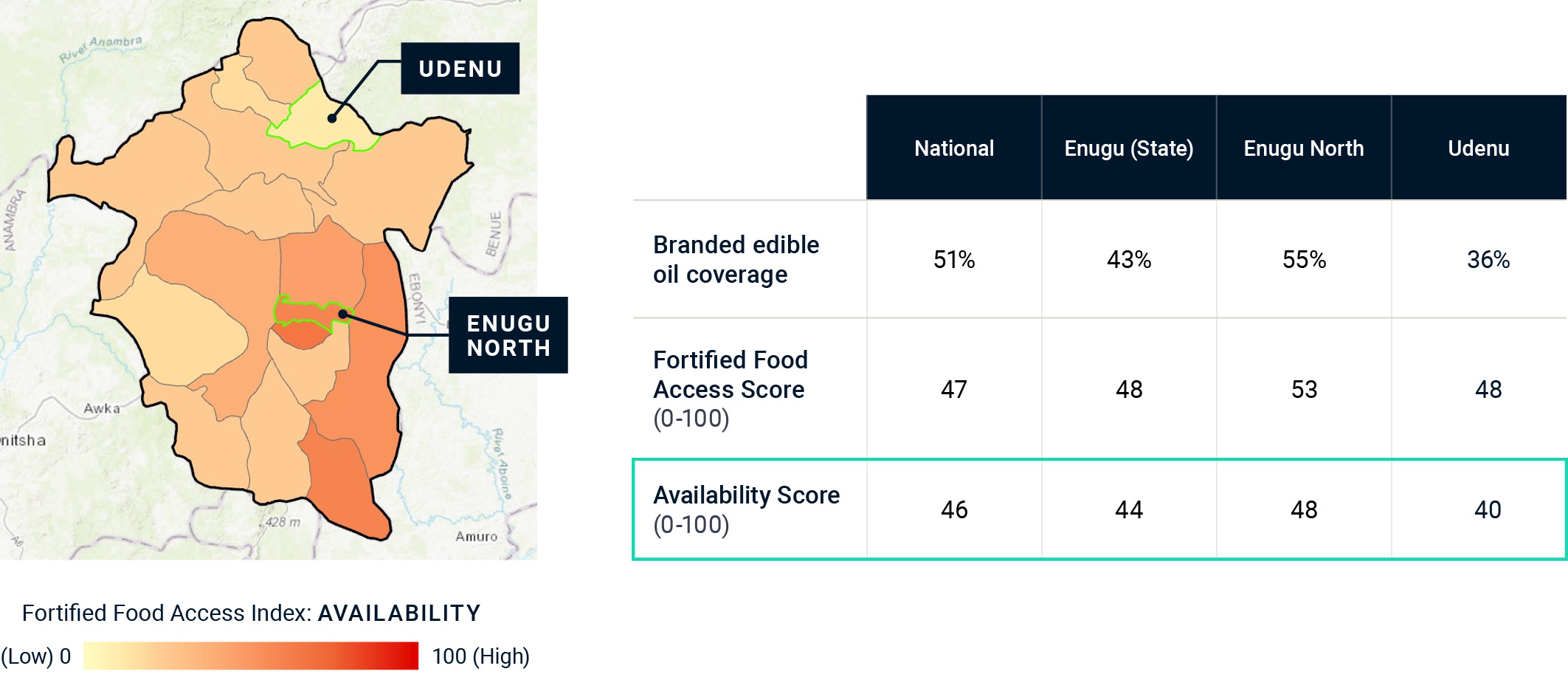Can Women’s Decision-Making Influence Fortified Food Coverage?

CASE STUDIES

The Goal
Map fortified food access to explore drivers of coverage, and better understand who is and is not being reached with critical micronutrients from large scale food fortification.
Fraym launched a two-year program to produce community-level data on fortified food access and household coverage in multiple countries. The result is a comprehensive, subnational proxy for fortified food coverage – connecting the coverage cascade to actionable access measures. Below we walk through some key findings from our recent Nigeria report.
Donors, program managers, implementing partners, and policymakers do not have an adequate measure of household level fortified food access related to the availability, affordability, agency, and awareness around fortified and fortifiable foods.
The Solution
By developing a measure of fortified food access to explore drivers of household coverage, we are now able to fill the existing gaps in understanding what barriers households face in acquiring fortified and fortifiable foods.
The Fortified Food Access Index contains the following components:

Below are a few examples of the insights this data reveals.



Fraym data reveals communities that are 65+ percentage points above the national average on key access indicators.
Edible oil is used by 99% of households. Additionally, 84% of households purchase oil rather than making it at home or receiving it from friends, family, or aid programs, and 51% of households report having a branded version.
In the state of Enugu, only 43% of the population uses branded oil. Further inspection at the LGA level reveals differences between urban and rural areas. We can see from the Fortified Food Access Index that lower branded oil coverage in Udenu compared to the more urban Enugu North is associated with lower availability.
Udenu also has a lower proportion of households that shop at supermarkets and other places with a good choice of products which may be driving these differences in coverage.
%
of households use bouillon cube in preparing foods at home
%
of households that use sugar report using a branded version
%
of households that use maize flour make it at home
Data and analysis of fortified foods can focus anywhere along the coverage cascade, from use of the food vehicle in preparing foods at home to the acquisition of a branded, fortifiable version of the food vehicle.
Fraym data injects a localized dimension to this coverage analysis and pairs it with measures of access to fortifiable food vehicles. Potential access insights include the identification of which communities face higher barriers due to lack of women’s agency or awareness of the benefits of fortified foods, which have practical implications for increasing uptake of fortified foods at all socioeconomic and geographic levels.